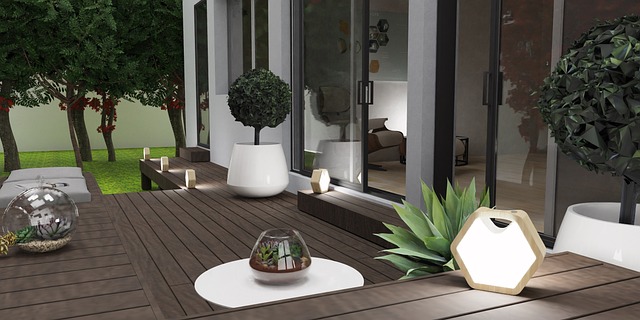3D CAD architectural visualization uses textures and shading to create realistic digital spaces, aiding in spatial understanding before construction. Techniques like Gouraud, Phong shading, and ambient occlusion enhance depth and fidelity. These methods facilitate informed design decisions, improving project outcomes. Advanced software offers photorealistic renderings, transforming 2D drawings into lifelike 3D models for better client communication.
“Explore the transformative power of textures and shading in 3D CAD architectural visualization. Unlocking depth perception, these techniques elevate static designs into vibrant, realistic scenarios. From subtle gradient shading to intricate material textures, learn how these elements blend to create immersive experiences. Discover advanced CAD tools that facilitate precise control over lighting and surface properties, enabling architects to bring their vision to life with unparalleled realism.”
Unlocking Depth: The Power of Textures in CAD
In the realm of 3D CAD architectural visualization, textures play a pivotal role in unsealing depth and dimension. By applying intricate textures to models, designers can craft renderings that mimic reality with remarkable accuracy, providing viewers with a more immersive visual experience. These textures serve as visual cues, guiding the human eye along intended paths, thereby enhancing the perception of depth and spatial relationships.
The strategic use of shading further amplifies this effect by accentuating contours, highlighting transitions, and casting realistic shadows. Together, textures and shading create a layered effect that allows the eye to parse complex scenes more easily, making digital architectural representations appear more solid, tangible, and life-like. This heightened depth perception is particularly crucial in architectural design, where clients and stakeholders need to grasp the full potential of a space before construction even begins.
Shading Techniques for Realistic 3D Visualization
In 3D CAD architectural visualization, achieving realistic depth perception is paramount for creating immersive and visually appealing renderings. Shading plays a pivotal role in this process by adding dimension and realism to digital models. Techniques like Gouraud shading, Phong shading, and ambient occlusion (AO) are commonly employed to enhance the visual fidelity of 3D scenes.
Gouraud shading calculates surface normals for each vertex and interpolates them across polygons, providing smooth transitions between areas of differing slopes. Phong shading goes a step further by considering light sources and material properties, resulting in more realistic reflections and highlights. Ambient occlusion simulates indirect lighting by measuring the occlusion of surfaces from ambient light sources, adding subtle depth cues and improving overall visual realism. When combined effectively, these shading techniques create textured and shaded CAD renderings that offer enhanced depth perception, making digital architectural models look more lifelike.
Architectural Rendering: Bringing Designs to Life
Architectural rendering is a powerful tool that brings design concepts to life, offering a realistic glimpse into what structures will look like before they’re even constructed. By utilizing 3D CAD architectural visualization techniques, designers and architects can create detailed, textured, and shaded renderings that simulate depth perception. This process involves intricate modeling, careful material selection, and precise lighting effects to create photorealistic images or animations that closely resemble the final product.
These renderings serve as a crucial communication tool for conveying design ideas to clients, developers, and stakeholders. They provide a clear understanding of scale, proportion, and aesthetic appeal, helping everyone involved envision the end result with greater accuracy. With advanced shading techniques, architectural renderings can highlight unique design features, enhance visual appeal, and facilitate informed decision-making during the design and construction phases.
Enhancing Perception with Advanced CAD Tools
In today’s digital age, 3D CAD architectural visualization has evolved into a powerful toolset for designers and architects. Advanced CAD software now offers sophisticated features like textured and shaded renderings, taking visual representation to new heights. These tools enable creators to produce stunning, realistic images that not only mimic physical structures but also convey depth and dimension in a way traditional 2D drawings cannot match.
By incorporating textures and shadows, CAD models gain an added layer of realism, making them appear more tangible and immersive. This heightened perception is especially valuable for clients and stakeholders who need to grasp the full potential and impact of a design before construction begins. It facilitates better decision-making by providing a clearer, more detailed view of what the final architectural masterpiece will look like.
Textured and shaded CAD renderings play a pivotal role in enhancing depth perception, making 3D CAD architectural visualization more realistic and impactful. By leveraging advanced shading techniques and incorporating intricate textures, designers can create immersive experiences that bring their digital creations to life. These tools not only improve visual appeal but also facilitate better decision-making during the design process. In today’s competitive landscape, embracing these innovations ensures that architectural projects stand out, captivating folks with their intricate details and lifelike presentations.
